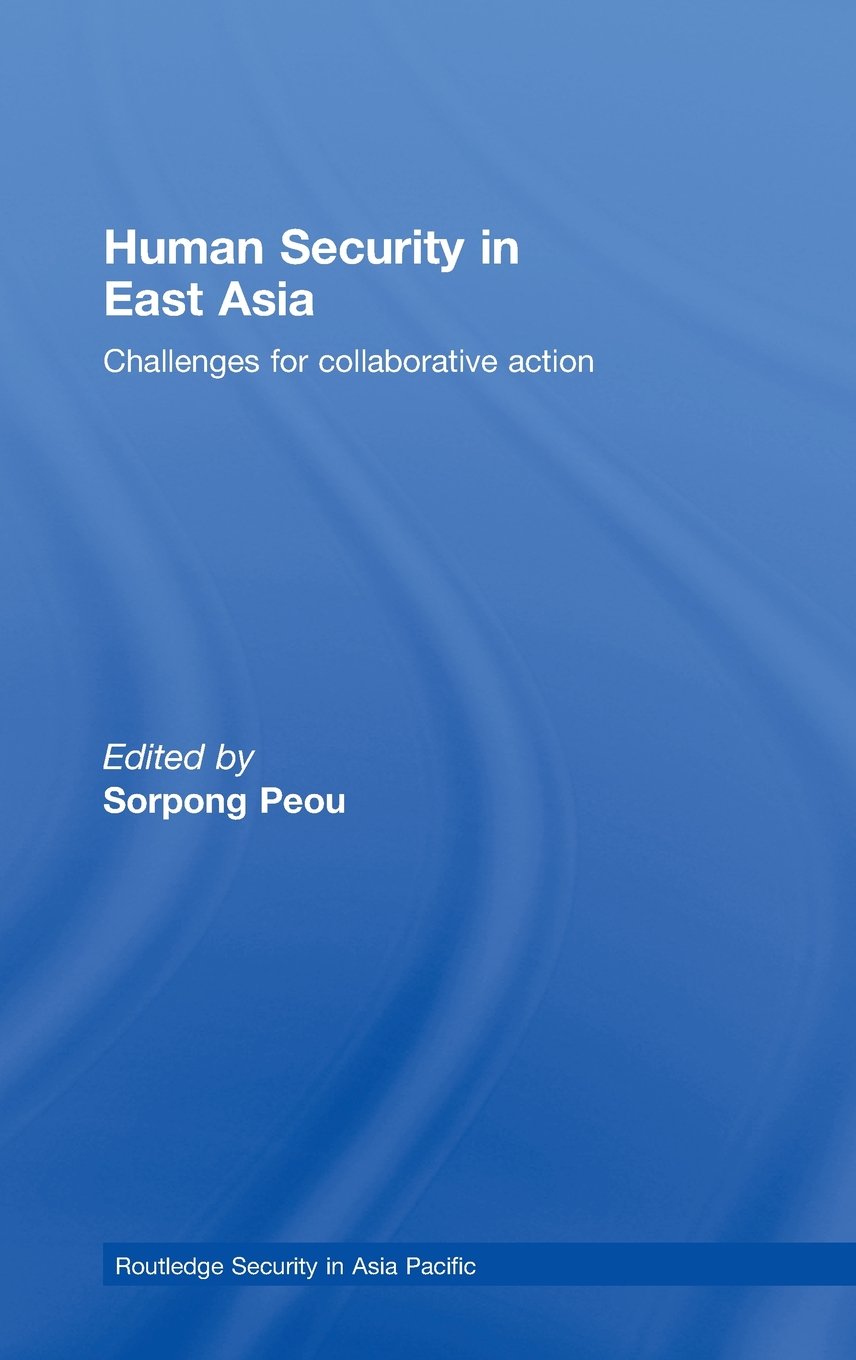
Though human security issues have been increasing in East Asia, the impacts of human security within the academic and policy-making circles are still limited, even advocates of human rights are always split on collaboration. This raises several critical questions: what are the theoretical differences between the West and East? What are the challenges to collaborations of protecting human rights in East Asian countries? Is there any hope for improving the extent of collaboration (e.g. humanitarian intervention, intrastate peacekeeping and international criminal justice) among actors in East Asia?
Human Security in East Asia gives the answers to these essential questions, which are urgently needed. This edited volume is a collection of analytical essays by the established scholars on human security in East Asia, this makes the arguments more tenable and convincing. This edited volume not only emphasizes the human security issues in East Asia (especially Southeast Asia), but also analyses the challenges facing collaboration in this region.
From Asian and Western perspectives, the edited volume does make three contributions to human security studies: first, it advances the MPCE framework (military, political, criminal and economic), which defines human security as “human freedom from the fear of direct and indirect physical harm resulting from military, political, criminal and economic violence” (p.6); second, it explores the barriers of collaboration in human rights and focuses on the human security issues in Southeast Asia; third, it highlights the policy recommendations to promote more effective collaborations in the future, that is “collaborative action based on normative consensus, policy coordination and material contribution cannot be forged and enhanced unless it also serves actors’ own interests” (p.27).
In my view, the most note-worthy chapters are 4 and 5, which explore the feasibility of collaboration on humanitarian intervention in Southeast Asia, and rethink the extent to which human security would be prioritized on the policy agenda in East Asian countries. In chapter 4, “Southeast Asia’s Points of Convergence on International Intervention”, Mely Caballero-Anthony highlights that several factors hamper Southeast Asian countries’ efforts in collaborations of humanitarian intervention. For instance, there is still insufficient consensus on the definition and norms of humanitarian intervention. As a result, most countries in this region have never prioritized humanitarian intervention on their policy agenda. Though ASEAN tends to the policy option of humanitarian intervention to some extent, it’s acceptance to humanitarian intervention is conditioned, that is, “within the framework of the UN peace operations” (p.69).
In chapter 5, “Human Security in Extremis: East Asian Reactions to the Responsibility to Protect”, Paul M. Evans argues that the future prospects of human security in East Asia are optimistic, although the human security collaboration is only at a primary stage. As Evans points out, human security has not been prioritized on the agenda of most East Asian countries, because “sovereignty” and “non-interference” still trump “human security” in the realm of policy making. For some countries in this region, human security was drawn from Western experience “appears to many an alien” (p.79). For some countries facing armed conflicts and socioeconomic instabilities, human security might be regarded as “dangerous transplant” (p.79).
It’s worth noting that this volume questions the shortcomings of the mainstream schools. For example, as Simon Springer criticises, neo-liberalism’s appropriation of human security as “partiality-based”, which “provides free-market ideology with the necessary language to veil its inherent hypocrisy” (p.140). For paving a middle way between the competing approaches to human security (i.e. broad approach and narrow approach), Peou forwards a more proper definition of human security, which nonetheless acknowledges military, political, criminal, and economic (MPCE) violence as threats to human security.
The edited volume is divided into two sections: from multiple theoretical perspectives (e.g. liberalism, constructionism and postmodernism), Part I (chapters 1-4) explores the theoretical and conceptual contentions between the West and East, including the conceptual issues of human security, the dynamics of human security discourse in both academic and policy-making circles, and the different comprehensions of human security in the East and West. Part II (chapters 5-8) examines the challenges and implications to collaborations of human security in East Asia. Based on the case analysis of East Timor and Cambodia, the contributors highlight the weak points of collaborations in human security in this region. The case of East Timor shows that, the participation of East Asian countries in the peace operations was interpreted as “a form of cooperation with Indonesia, based on the pursuit of their national interests” (p.107). Moreover, the contributors discuss the feasibility of collaboration, such as, international criminal justice. Concerning the collaboration in the field of international criminal justice–an alternative option of promoting human security, the collaboration among stakeholders and powerful states is urgently needed.
Peou’s edited volume does succeed in achieving its’ goals, I look forward to the second edition of this well-researched and organized volume, which will hopefully explore the newly emerging human security issues in East Asia and their interconnections with collaboration. For example, what are the dynamics of child soldiering and other critical human security issues, including human trafficking and drug smuggling, in East Asia? What are the policy implications of these issues for collaboration in this region?
In short, Human Security in East Asia should be a must reading on human security in East Asia. It deserves a wide readership—academics, scholars, policy makers and students, who are interested in human security of East Asia, especially in Southeast Asia. In addition, this volume is a highly recommended purchase for university libraries and anyone who is trying to know more about the challenges and implications of human security in East Asia.
Published in Journal of Conflict Transformation and Security (JCTS) Vol. 4 | No. 1-2



